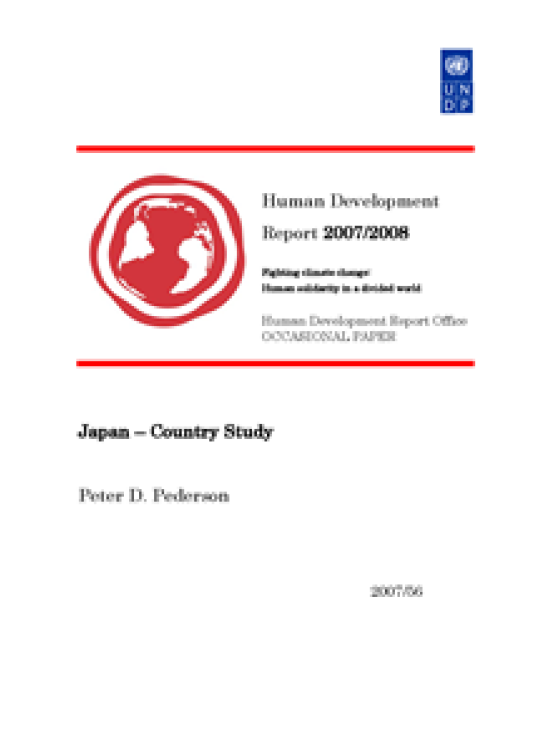Japan – Country Study

Download Report by Language
Document
pedersenpeterjapan.pdf
(448.98 KB)
Citation
Pederson, Peter D.. 2008. Japan – Country Study. New York.
Japan – Country Study
Posted on: January 01, 2008
Japan has not as of February 2007 set any concrete long-term targets (beyond Kyoto 2008-2012) for greenhouse gas emissions (GHG) reductions, nor announced a long-term strategy for climate change mitigation. There are several promising research initiatives, but climate change policy is, at present, very much focused on meeting the country’s Kyoto Protocol commitment to reduce GHG emissions by 6% (2008-2012) from the 1990 level. Actual emissions as of end of 2005 (preliminary figures) had, however, risen by 8.1% from 1990, thus leaving a gap to bridge of more than 14%. Major emissions increases have occurred in commercial/retail, housing, and transportation sectors, while the industrial sector has reduced emissions by some 3% since 1990. A voluntary cap-and-trade scheme (CO2 emissions only) operated by the Ministry of the Environment started operations in 2006, and when the second annual round commences in April, 2007, 89 corporations will be participating in this initiative. It is positioned as a testing bed for possible future emissions trading schemes, but there is no clear policy commitment to introduce a full-fledged scheme. Research by the National Institute for Environmental Studies (NIES) explores scenarios for a Low Carbon Society 2050, and this research is expected to provide a foundation for future legislation and roadmaps toward the de-carbonization of society. In February 2007, this project released an interim report suggesting that a 70% reduction of GHG emissions (as compared to the 1990 level) is both technologically and economically feasible; the cost would be no more than approximately 1% of GDP in 2050, the report suggests. Nippon Keidanren (Japan Business Federation) requires its member corporations in seven key industries, accounting for more than 90% of industrial emissions, to reduce emissions by 2010 to the 1990 level. This appears to be achievable for most industries, but Keidanren has not announced any further, more progressive or long-term reduction targets. Japan has been very successful in promoting energy efficient technologies, and the “Top Runner Program” encouraging best-in-market approaches to energy efficiency now covers 21 product categories. Also, Japanese clean energy technology transfers to other Asian nations is actively being promoted through NEDO – the New Energy and Technology Development Organization. Further, in the “Asia-Pacific Partnership for Clean Development and Climate” initiated in 2005 by six nations including Japan and the US, a technology and market-oriented approach to clean development appears to align well with Japan’s approach to mitigation. However, there are no commitments to emissions reductions linked directly to these initiatives. The Japanese Government’s “Kyoto Target Achievement Plan adopted in April 2005 is at present(February 2007)under revision, and major new policy initiatives are expected in the latter half of 2007, but a key issue will be how/whether the Japanese Government can persuade industry, represented by Nippon Keidanren, to further action.

